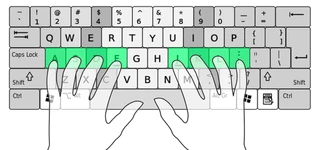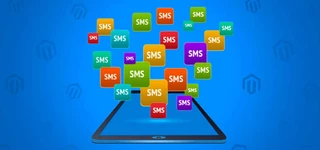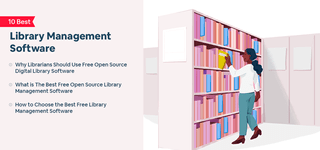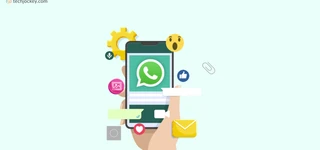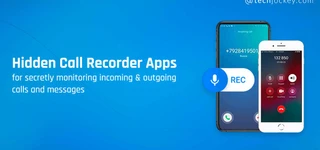
Imagine a classroom without Teaching Aids, where educators rely only on lectures without any visual or interactive elements. No diagrams, no charts, no hands-on activities—just hours of monotonous teaching.
Such an approach not only lacks engagement but also fails to accommodate different teaching types.
The Uses of teaching aids go beyond just enhancing lessons; they make learning more interactive and effective. Their Importance in modern education cannot be overstated, especially with decreasing attention spans and the growing need for dynamic learning methods.
What are Teaching Aids?
Teaching aids are educational tools and objects that teachers make use of to make learning interactive and fun for their students. From educational videos, audios, interactive apps, etc., to flashcards, graphs, models etc., these come in various forms, all serving one common purpose, i.e., to facilitate learning.
To understand it better, picture this – you are attending a classroom session on human anatomy and your teacher is making use of a skeleton and a human body diagram to make you understand the subject at hand better. Now, doesn’t that sound effortless? To be able to learn about the human body without relying on plain words? To actually view the body and not imagine it on the basis of what you read? It surely does, all thanks to the skeleton and the diagram, aka teaching aids.
And that is not where their usability ends. By relying on teaching aids, teachers can make certain that students not only understand a topic better but also remember important details about it for a long time. Well, at least until the exams end. No, you didn’t hear that from us!
Types of Teaching Aids

Teachers can make use of a range of teaching materials to actively engage students in the learning process. These aids serve varying purposes depending on their area of usage. Let’s delve into them one by one to get an extensive look…
- Visual Aids
Visual aids, as the name suggests, comprise perceivable matter, such as colorful pictures, diagrams, and charts, that make any and every piece of information easy to comprehend. For content that’s presented in the form of visuals has the potential to grab students’ attention towards the subject matter better than anything else.
For instance, if your goal as a teacher is to make your students memorize the 7 colors of rainbow, you can do so by showing them a picture of it rather than making them go through what’s written in a book. There are several school management software available that can be used to create such interactive learning courses for students. By signing in their portals with their student IDs, the students can access these courses for free.
- Audio Aids
Audio aids involve the use of audio to help students learn lessons in a fun way. Be it an audiobook or a snippet of your favorite song, anything audible that facilitates the learning process falls under this category.
For instance, if a teacher is planning to make her students learn the alphabet, using any ABCD song for children might do the trick, and how!
- Tactile Aids
Tactile aids include objects or devices that students can touch and feel to explore stuff, making learning a hands-on experience. It’s like the difference between reading about driving a car and actually driving one down the street.
In a classroom setup, for instance, educators can make use of blocks to help their students understand math concepts like counting, patterning, measurement, etc. As students get to touch the blocks and ascertain their shapes and sizes rather than relying on theory, they tend to learn better. The sense of touch thus makes all the difference!
- Interactive Aids
Interactive aids consist of educational apps, games, AR flashcards, or quizzes that let students actively participate in the learning process. By challenging their minds, these tools empower students to experiment and learn at their own pace.
For example, students can learn better about the solar system if they are given access to an app that lets them virtually explore the universe and take quizzes pertaining to the same.
- Real-Life Aids
Real-life aids, as is obvious by the name, are things that take place in real life and serve as great lessons for the students. This is akin to taking learning out of the four walls of the classroom.
For example, a student can learn more about a monkey by looking at one and observing its characteristic traits than reading about one in a book. Other examples of real-life aids are field trips, workshops, school exhibitions etc., basically stuff that bridges the gap between theory and practice and makes learning experiential.
- Teacher-Created Aids
Anything and everything that a teacher creates on her own in order to help students retain the concept at hand is commonly referred to as a teacher-created aid. From skits to personalized flashcards; from classroom challenges to storytelling, these aids can take any form as per the requirements of the students.
For instance, a teacher can prepare a skit on, say, the life and times of Mahatma Gandhi to help students learn about him in a better way. The kids can be asked to play the various characters involved, so they remember the details properly.
- Audio-Visual Aids
Audio-visual aids are instructional devices that use sounds and visuals to help teachers deliver lessons more effectively. These aids stimulate the sensory organs of students in an attempt to help them quickly comprehend the lessons being taught in the classroom. Some examples of audio-visual aids include filmstrips, microfilms, slides, opaque projectors, tape recording, etc.
If you have a student management system in place, you can integrate it with a learning management software to create and share audio-visual learning materials with students. All the students would then need to do is to sign in to their portal to access these interactive courses.
Uses of Teaching Aids
Teaching aids, as one of the most essential aspects of a classroom, can be used for varying purposes when it comes to enriching the educational experience and making learning more accessible to all. Some of the most common uses of teaching aids are thus listed below for your understanding…
- Making Concepts Clear: Teaching aids can help students understand complex or tricky concepts easily. A teacher can make use of charts, diagrams, and working models to attain the same and make learning attainable for all.
- Helping Students Engage Better: Students tend to find presentations, games, and puzzles interesting. These are sure to boost their engagement in the class and make lessons more memorable.
- Supporting Different Learning Styles: A learning style that works for you might not work for others. Teaching aids can help resolve this issue by offering varied tools ranging from those visual and auditory to those kinesthetic.
- Optimizing Retention: We, as humans, are naturally inclined to learn better from visuals than by reading mere words. In fact, even as we read, we try to visualize everything. This says a lot about the power that teaching aids like pictures, diagrams, or videos hold in aiding long-term retention.
- Encouraging Participation: When students are asked to indulge in activities or make use of interactive technologies, they are bound to become more involved in the classroom sessions. And by virtue of that, learn more.
- Offering Visual Stimulation: Visual aids like flashcards or posters have the innate ability to enhance the cognitive processing of students. This gets primarily applied in the case of learners who are young or have learning disabilities of some sort.
- Facilitating Differentiation: Not all students are same and require the same amount of stimulation. Teaching aids can be tailored to meet the needs of different students, be it providing extra support to those struggling or more challenging material to those faring well.
- Saving Time: Teaching aids also prove to be beneficial for educators. These help them impart knowledge more quickly and effectively, leaving them with extra time to perform student engagement activities.
Importance of Teaching Aids
Classroom teaching aids and materials have revolutionized the teaching-learning experience like no other. As tools meant to bridge the gap between theory and practice, their importance for the education sector thus cannot be measured or put into mere words. However, to put things in perspective, it is significant we shed some light on the importance of teaching aids, both for the educators and the students. Read on as we do the same…
- Make Learning a Fun Activity: To study just by relying on written matter can make the entire teaching-learning process boring for students and teachers alike. However, with teaching aids catering to various subjects like math, English, science, etc., at their disposal, teachers can turn things in favor of all the key stakeholders involved. This particularly stands true for students who get to engage in fun learning using colorful visuals and interactive games.
- Easier to Teach Complex Concepts: Students tend to ignore concepts or topics that they find difficult to make sense of or grasp. Learning aids like visuals or interactive apps can simplify these complex topics for students to fully comprehend them without worrying much.
- Help in Memorizing Concepts: Students who tend to forget information easily benefit the most from teaching aids. It’s similar to what happens in real life, wherein we remember things we come across more than anything we simply read in textbooks. Visualizing, hearing, or touching something, thus, are key to retain stuff for longer periods of time and teaching aids are devised to do just that.
- Enhance Thinking Skills: These aids significantly help teachers develop their students’ thinking or reasoning power. When they indulge in interactive games or puzzles, they tend to think a lot and use their cognitive skillset, which ultimately enhances their thinking skills.
Disadvantages of Teaching Aids
Despite offering multiple advantages to enhance the learning experience for students, teaching tools do have their own drawbacks. It is important we list them for you to get a clear picture.
- Training Needed: If teachers aren’t given proper training to use teaching aids, they might end up using them incorrectly, thereby ruining the entire learning experience for the students. They might also fail to relate them to the subject matters needed to be taught if they aren’t skilled enough.
- Time Consuming: Tools that aid the teaching-learning process aren’t created in a day, just like Rome wasn’t. Their ideation and final formation require time and a lot of effort.
- One isn’t enough: Teachers cannot rely on one aid to teach a variety of subjects. Every subject has its own requirements, and so, teaching aids should be changed or created accordingly.
Conclusion
All in all, teaching aids can significantly help in making learning more enjoyable for students. Thus, instead of just using textbooks and blackboards, teachers should make use of these aids to teach their students. This will not just help them in learning complex concepts easily but also help them improve their thinking skills, which is obviously a plus!
FAQs
What are audio aids?
Teaching aids that make use of audio to assist students in learning about a specific topic or concept are called audio aids. These work best when learning about languages where listening and communication skills are required. Some examples of audio aids are radio, tape recorders, CD players, MP3 players etc.
What is meant by teaching aids?
Teaching aids are objects that teachers use in a classroom setup in order to enhance the learning experience of students. Some examples of teaching aids are flip charts, globes, flashcards, etc.
What are types of teaching aids?
Visual aids, audio aids, audio-visual aids, tactile aids, interactive aids, teacher-created aids, real-life aids etc., are the various types of teaching aids available to us. Teachers can make use of these tools to make the learning process fun and interactive for students.
What is the best teaching aid?
Real-life teaching aids are the absolute best, as they allow students to see, hear, or touch things to learn about them in a more effective manner.
What is an example of a teaching aid?
Interactive apps serve as a good example of teaching aids when making learning fun and interactive is the end goal.
What are teaching aids for English?
There are several teaching aids that one can use to teach English language. These include course cassettes, audio recordings, interactive whiteboards, writing prompts, etc.
Yashika Aneja is a Senior Content Writer at Techjockey, with over 5 years of experience in content creation and management. From writing about normal everyday affairs to profound fact-based stories on wide-ranging themes, including environment, technology, education, politics, social media, travel, lifestyle so on and so forth, she... Read more







